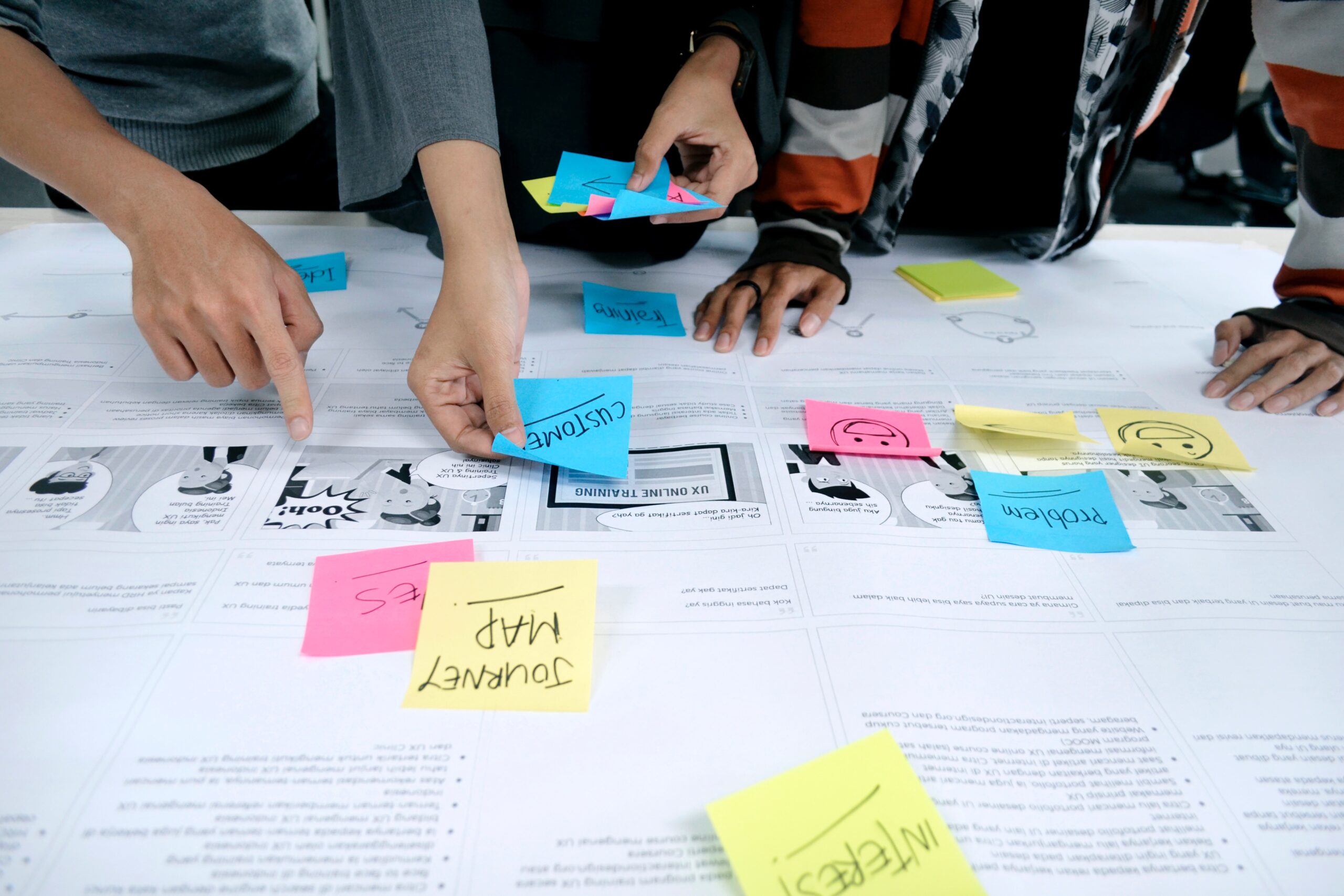21st Apr 2020
There are numerous approaches to customer journey mapping. In this interview with Yorkshire Building Society’s Neil Greenwood, we discover why its approach is proving so successful.
When MyCustomer surveyed 250 CX professionals in 2018, it found that 67% undertake some form of journey mapping – with 85% reporting that it was delivering a positive impact.
However, journey mapping can be a fruitless exercise without the full weight of an organisation’s support behind it.
In this interview, we speak to Neil Greenwood, senior customer journey mapping consultant for Yorkshire Building Society, an organisation which has put its absolute confidence in the mapping process and is starting to feel the benefits of doing so.
Christopher Brooks: Neil, thank you so much for joining us today. We’ve been running this series featuring leaders in CX and felt it was time to focus on one of the leading practices, customer journey mapping. When asked by friends and relatives what you do, how do you sum it for them in a sentence?
NG: In my more creative moments, I like to think of the mapping part of the role as being about storytelling, so I tend to focus on that. More generally though, I talk about being the person who’s employed to speak on their behalf, or being the internal conscience of the customer.
CB: We often see CX leads in organisations, but less often (although emerging) specific job roles for mapping. Is this a relatively new role at Yorkshire Building Society?
NG: Yes. YBS are always looking at how best to provide value to their members. The team in its current format is just over a year old. Whilst mapping is central to many of the tasks we undertake, it’s important to say that it’s not the only one.
Ultimately mapping is an additional, albeit different and hopefully successful way of providing useful insight that leads to action. The language that people use can be a real cultural driver too, so simply by talking in terms of journeys that’s a great start.
CB: Prior to YBS, you worked with Direct Line. Were you involved in just mapping there, or was your role broader?
NG: It was a slightly broader, all-encompassing CX role at Direct Line, although mapping and establishing customer change around end-to-end journeys formed a big part of the work more latterly.
CB: Coming back to YBS, what was the CX set up? And where does mapping fit in overall?
NG: Structurally the customer journey management team sits under our chief customer officer alongside many of our immediate stakeholders who deliver the customer journey; for example, our Retail Network colleagues, which makes collaboration easy. The team itself has other roles based around analytics and our customer research, and has links into key projects, all of which form integral cogs and enable us to deliver.
CB: When you arrived at YBS did they have maps or are you working through them now?
NG: A mixture of both. Our business at its core is about savings and mortgages and a good start had been made on mapping both, prior to my arrival. Since joining we’ve worked hard on evolving the maps, with the primary focus being on ensuring they represent the full end-to-end journey, including all potential touchpoints and elements and really bringing them to life with data and where possible customer verbatim comments.
CB: What is the main purpose and benefits of maps for YBS?
NG: We exist for the benefit of our members at YBS and are here to create sustainable value for them. Understanding the journeys they experience is a key enabler to us doing that. The maps will provide a common view for everyone to work from to achieve that, whether it is initiating specific activity, aligning activity underway in different areas of the business, or providing insight into larger programmes such as our digital work.
CB: There is so much to this topic, so I want to cover some key aspects which I know readers will be grateful for ideas on. Firstly, before a map is produced how do you get buy-in to the process which invariably involves a number of people from across the business?
NG: At YBS, we’re about providing real help with real life and that’s a purpose we all have a joint responsibility to deliver. When our work is aligned to that purpose it’s much easier to gain buy-in from key stakeholders, so that’s an absolutely key part. Beyond that, it’s about spending time understanding the benefits that a map will provide to the attendees and their respective areas. I’m continually surprised at the uses different teams find for customer journey maps.
CB: Do you map as and when needed or is there a calendar to adhere?
NG: At the moment at YBS, we are on our early iterations, so formalising our ongoing updates, revisits and new maps will come a little down the line for us. This is a really interesting point of debate though about if and when to update maps. Part of the answer lies in finding the right level of detail to map at in the first instance. I always challenge myself on what level of change would fundamentally change the maps and whether that feels right?
CB: When it comes to running a workshop, could you give us an outline of how it works?
NG: In most instances it all starts with a trip to the post room and the procurement of some post-it notes! Mapping tools will no doubt continue to evolve, but for capturing the inputs, the old methods are the best! Ensuring the right attendance, both in terms of areas and people is also important.
Mapping in the wrong space can be a deal breaker for me too; it’s an active session and works better with people able to “walk the journey”. Once scope is understood, planning a realistic number of sessions and what they will cover would be next.
CB: How do you keep your participants focused on the customer perspective?
NG: Great question and possibly one of the key challenges in roles like mine. I’ve always considered workshops as an opportunity not only to produce the required output, but also to influence a new group of people into becoming advocates for the approach.
One specific thing I use is a series of 10 principles. They are by no means prescriptive, but they are introduced at the start and sit on the wall as a point of reference and can be used to guide the work if things get difficult.
CB: What are the key elements you are looking to capture during the session?
NG: This would depend on the specific task at hand, but as a general principle, I try to deconstruct what the end product will be into its various component parts and then build it back up. Almost universally I would start with the individual customer touchpoints, which in some instances may need to begin with the business journey before elevating it back up. Depending on the journey, that may then need to involve a channel view.
Once that framework is there, other elements can then be added around it such as pain points, wow moments, relevant data, potential exit points to other journeys etc.
CB: When you’ve found something of interest (pain point etc.), what’s the process of taking it forward?
NG: Our focus is currently on the mapping element of the work at YBS and we aim to make them insightful to a range of audiences. Certainly when we shared the original maps at Direct Line, it was great to see the responses of people on the front line vs the Claims Exec, both of whom interpreted it their own way as you would expect, but neither was less useful.
CB: Having left the workshop how do you take what was scribed on the wall into a more usable business tool?
NG: We don’t have a specific journey mapping tool at present, so we use the usual range of software. I’d certainly be interested to hear from any readers that have used a particularly good value mapping tool though!
CB: How do you ensure everyone in the organsiation is aware of the value of maps and considering the impact when planning their activities on the customer’s journey?
NG: The maps that we have are readily available on our internal intranet site for anyone to access. We also have a governance structure that supports visibility of any customer change.
CB: What are the successes you’ve had which involved customer journey mapping?
NG: Whilst still relatively early in YBS, we’ve already seen attendees make changes on the back of attending Mortgage Mapping sessions having understood the journey from a different perspective. At Direct Line, in Home Claims where there was a large supply chain we had lots of success in understanding how that all pieced together for the customer and in doing so, significantly reduced the cycle time of parts of that journey. Where duration and NPS were so closely correlated, the benefits were clear to see too.
CB: What are the ‘bear traps’ to customer journey mapping you should avoid?
NG: Customer journey mapping can sometimes be a little daunting because you’re heading into the unknown; when you start the exercise you don’t know what’s going to emerge. The temptation can, therefore, be to preempt your findings and miss nuggets that come up. Trust the process would definitely by my advice. I’m quite happy to admit that by trying to be everything to everyone before, I’ve pleased nobody. As simple as it sounds, understanding why you are mapping is also critical.
CB: Finally, what advice would you give to someone who is looking to establish customer journey mapping in their organisation?
NG: Just start! You’ll make mistakes, you’ll learn, but for sure you’ll find out things that you didn’t know before. Be flexible, there are lots of great methodologies/blogs/forums out there, all of whom advocate slightly different approaches. Take the bits that work best for you and your organization. Finally – Enjoy it. We work in a hugely interesting and varied area and one that can be incredibly rewarding.



